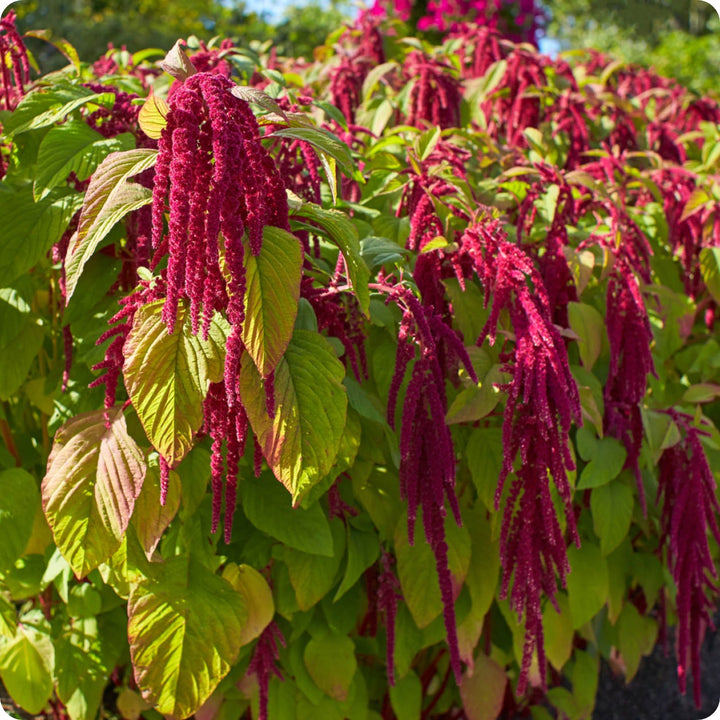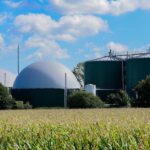Amaranth is an ancient grain and leafy green that has gained popularity for its nutritional value, adaptability, and resilience in harsh growing conditions. In South Africa, amaranth can be grown for both its seeds and leaves, making it a versatile crop for small-scale and commercial farmers. This guide will take you through the entire process of growing amaranth from seed to harvest, including the necessary inputs, machinery, pest and disease management, fertilizers, and best practices for soil and water management.
1. Choosing the Right Amaranth Variety
Amaranth comes in different varieties, including those grown for seeds (grain amaranth) and those grown for their nutritious leaves (leafy amaranth). The choice of variety will depend on your intended use and market demands.
- Seed Amaranth: Varieties like Amaranthus cruentus, Amaranthus caudatus, and Amaranthus hypochondriacus are cultivated for their grain.
- Leafy Amaranth: Varieties like Amaranthus tricolor are typically grown for their leaves, which are consumed as a vegetable.
2. Land Preparation
Proper land preparation is key to maximizing the yield of your amaranth crop.
- Soil Type: Amaranth thrives in well-drained, loamy soils with a pH between 6 and 7. Sandy loam soils work best, but the plant is tolerant of less-than-ideal conditions.
- Soil Preparation: Plow the field to a depth of about 20-30 cm to ensure proper aeration. Remove any weeds, rocks, or debris. For smaller plots, hand tilling or using a hoe may suffice, while large-scale operations may require tractor-drawn plows.
- Fertilization: Add organic compost or well-decomposed manure to improve soil fertility. If soil tests show nutrient deficiencies, apply a balanced fertilizer such as NPK 10-10-10 at the rate of 200-300 kg per hectare.
3. Seed Planting
Amaranth seeds are tiny, so planting requires careful handling to ensure even distribution.
- Planting Depth: Sow seeds shallowly, no deeper than 1.5 cm into the soil. Seeds should be broadcast or planted in rows, with row spacing of 40-60 cm and plant spacing of 10-15 cm.
- Seed Rate: For direct seeding, use about 2-3 kg of seed per hectare. For transplanting (starting seeds in a nursery), you’ll need less—about 1 kg of seed per hectare.
- Planting Time: Amaranth is a warm-season crop. Plant in early summer (October to December) when the soil temperature reaches 18-24°C.
4. Water Requirements
Amaranth is relatively drought-tolerant but requires adequate moisture during its initial growth stages.
- Irrigation: Water the crop regularly during germination and early growth stages. Drip irrigation is ideal for saving water, but overhead irrigation or furrow irrigation can also be used. Water once or twice a week depending on rainfall.
- Watering Frequency: In the absence of rain, apply 25-30 mm of water per week. During dry spells, amaranth may need additional watering to maintain healthy growth.
5. Growth Stages of Amaranth
- Germination (5-10 Days): Amaranth seeds will germinate within 5 to 10 days in warm conditions. Ensure the soil is moist but not waterlogged.
- Vegetative Stage (3-4 Weeks): Once seedlings emerge, the plant will develop leaves rapidly. This stage requires adequate nitrogen, so side-dress with a nitrogen-rich fertilizer (NPK 20-10-10 or urea) 3-4 weeks after planting.
- Flowering Stage (5-8 Weeks): The plant will start forming flowers, typically 5-8 weeks after planting. Ensure good moisture levels, as water stress can affect flowering and reduce yields.
- Grain-Filling Stage (10-12 Weeks): After flowering, the grains begin to fill. Reduce water applications to avoid excessive moisture, which can lead to mold growth or lodging (bending over of the plants).
- Maturity and Harvest (12-16 Weeks): Amaranth is ready for harvest when the plants turn golden-brown, and the seeds become hard and dry. For leafy amaranth, harvest the leaves at any time during vegetative growth.
6. Pest and Disease Management
Amaranth is relatively resistant to pests and diseases, but some issues may still arise.
- Pests: Aphids, flea beetles, and caterpillars can be problematic, especially during the vegetative stage. Use organic insecticides like neem oil or apply synthetic insecticides (e.g., pyrethroids) if infestations are severe.
- Diseases: Leaf blight and damping-off (a fungal disease that affects seedlings) can occur in moist conditions. Ensure proper plant spacing for airflow, and avoid overwatering to reduce the risk of fungal diseases.
- Herbicides: Use pre-emergent herbicides to control weeds before planting. Post-emergent herbicides can be applied if weeds become problematic. Manual weeding or hoeing is an option for small farms.
7. Fertilizer Application
- Organic Fertilizers: Amaranth benefits from compost or manure, applied at 10-15 tons per hectare. This provides the necessary nutrients for the plant without harming the environment.
- Chemical Fertilizers: Apply a balanced NPK fertilizer (10-10-10) during planting at a rate of 300-400 kg per hectare. Side-dress with nitrogen-rich fertilizers 3-4 weeks after planting to boost leaf and grain production.
8. Harvesting
- Grain Amaranth: Harvest when the seed heads turn golden-brown and the seeds easily rub off the plant. This is typically 12-16 weeks after planting. For smaller plots, hand harvesting is sufficient, while large-scale farms may use combine harvesters.
- Leafy Amaranth: Harvest the leaves at any time during the vegetative stage, typically 3-6 weeks after planting. Use pruning shears to cut the leaves without damaging the plant, allowing for continuous harvests.
9. Post-Harvest Handling and Storage
- Grain Drying: After harvest, dry the amaranth seeds in the sun or using mechanical dryers. The seeds should be dried to a moisture content of 10-12% to avoid spoilage.
- Threshing: For grain amaranth, seeds can be separated from the seed heads by threshing manually or with a mechanical thresher.
- Storage: Store amaranth seeds in airtight containers in a cool, dry place to prevent mold or insect infestations. If stored correctly, seeds can last for several months to a year.
- Leafy Amaranth: After harvesting, leafy amaranth can be sold fresh, or blanched and frozen for extended storage.
10. Machinery Requirements
For small-scale production, amaranth can be grown with minimal machinery. However, for larger farms, consider investing in the following equipment:
- Tractor: For land preparation, plowing, and tilling.
- Seed Drill: For precise planting and seed spacing.
- Irrigation System: Drip or sprinkler irrigation to ensure adequate water supply.
- Threshing Machine: For efficient seed separation and processing in grain production.
Amaranth is a highly versatile crop suited to South Africa’s diverse climates and soil types. By following the steps outlined above, farmers can successfully grow amaranth from seed to harvest. With proper land preparation, pest management, and water use, amaranth can provide high yields and add value to your farming operation. Whether you’re growing it for its seeds or leaves, this resilient crop can contribute to food security and sustainable agriculture in South Africa.
Join 'Farmers Mag' WhatsApp Channel
Get the latest Farming news and tips delivered straight to your WhatsApp
CLICK HERE TO JOIN






